11 Favorite Cities in Italy for Every Traveler
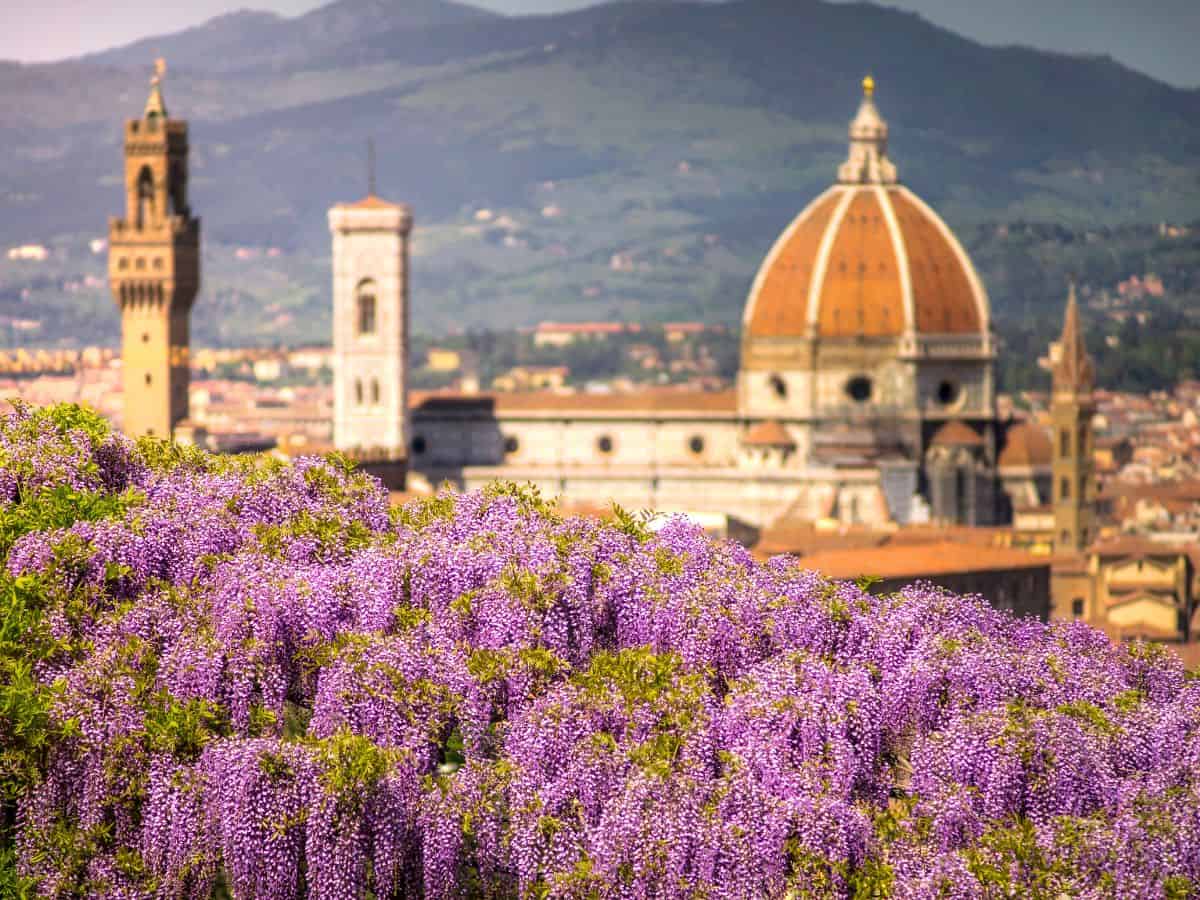
This post may contain affiliate links. If you make a purchase through them, we may earn a small commission (at no cost to you).
Of all the gorgeous places in Italy, its grand cities stand out.
If you’re planning an Italian vacation, they’re must-visit destinations.
With marvelous museums, awe-inspiring historic landmarks, stunning architecture and mouth-watering cuisine, each city offers something special.
From the eternal allure of Rome to the mosaic magic of Ravenna, we’ve picked our 11 favorite cities in Italy. These are the heavyweights – the most famous Italian cities everyone should experience at least once. (Smaller gems, like the UNESCO-listed cave city of Matera, aren’t on this list.)
Exploring them all in one trip would be ambitious (unless you’re planning a really long stay). But we definitely recommend focusing on two or three to anchor your itinerary!
Contents: Our favorite Italian cities to visit
1) Venice: The city of canals



Ahhh! Venice! The “City of Canals” and one of the most beautiful cities in Italy!
Did you know there are more than 400 bridges in Venice? We’ve crossed oodles of them strolling about the city’s spider web of streets – and have gotten lost countless times too!
And those gondolas. Taking a gondola ride with your honey is one of the most romantic things to do in Venice. (And, of course, there are some wonderfully romantic hotels in this city too.)
On a first visit to Venice, you should tour inside the Doge’s Palace and St. Mark’s Basilica at Piazza San Marco. Skip the long lines with this top-rated guided tour of both of these stunning Italian attractions. (The tour includes terrace access at St. Mark’s Basilica.)
Also stroll about St. Mark’s Square and watch the pigeons being fed and fluttering about your feet.
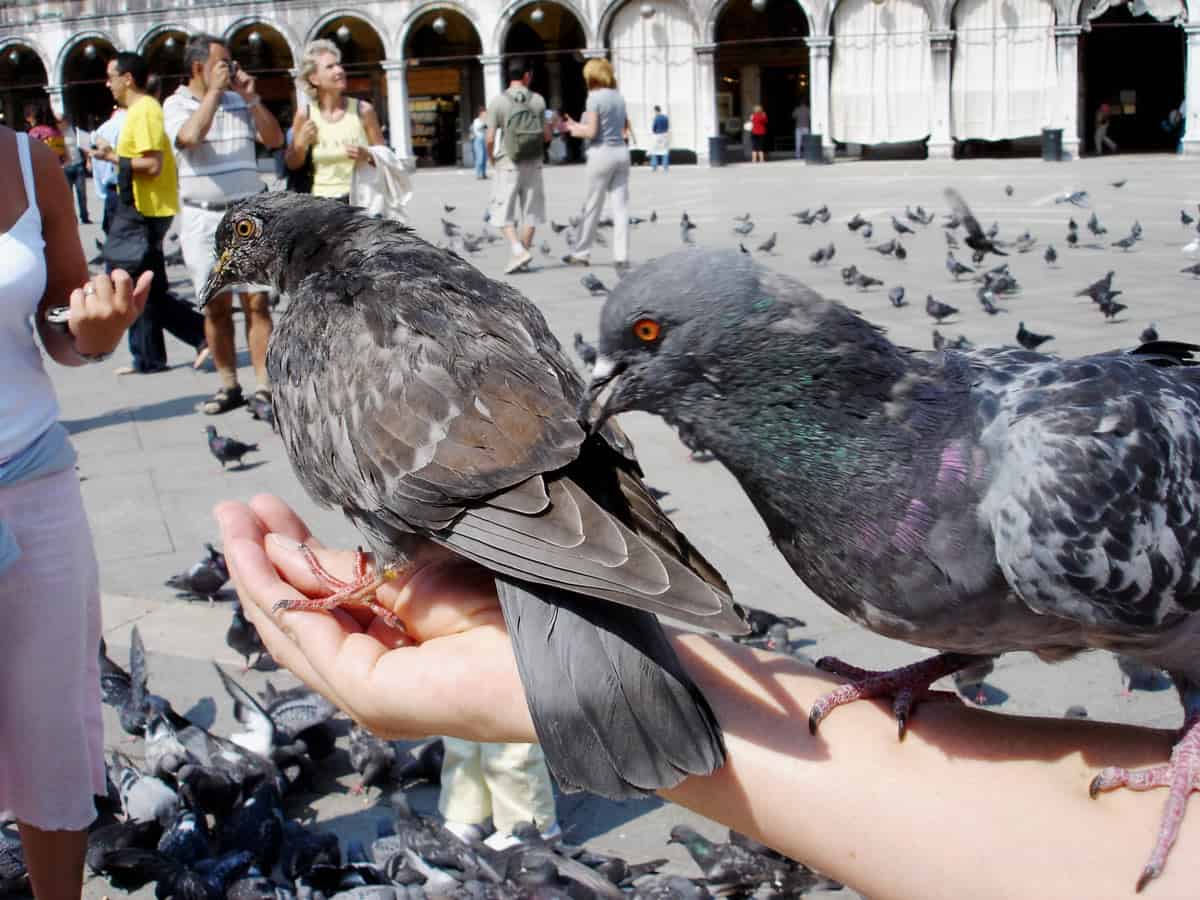
Perhaps go window shopping while enjoying a gelato.
And then just spend the rest of the time soaking up the sights of the old palazzos along the Grand Canal and the boats gliding through the Venice waterways.
Venice goes together perfectly with Rome and Florence (covered below) in this Rome, Florence and Venice itinerary.
If you’re arriving in Venice via a cruise ship, be sure to read our guide on how to find your way on foot from the main Venice cruise terminal to the train station or into Venice itself.
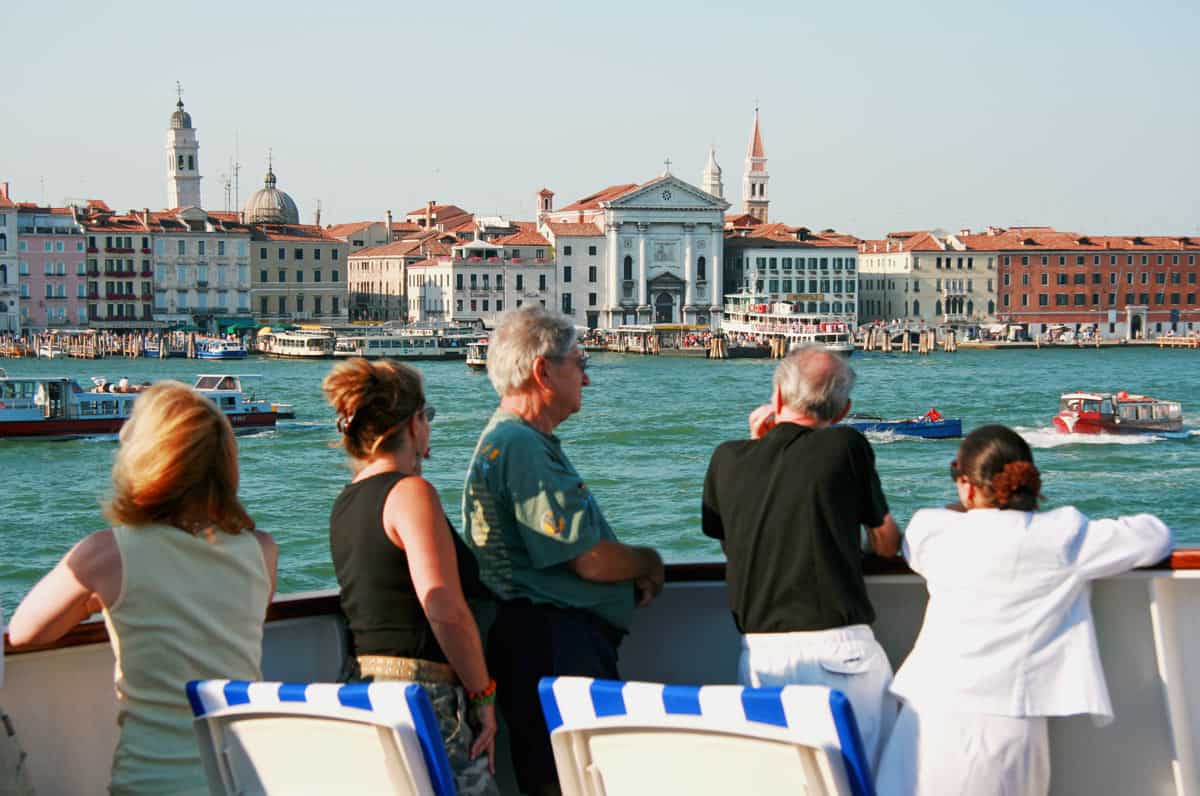
Venice’s only problem is that it’s too beautiful for its own good and naturally draws throngs of tourists. To truly enjoy its magic (and give the city a breather), visit in quieter months, like March or late October into November.
2) Rome

“Oh Rome! My country! City of the soul!” extolled Lord Byron.
City of the soul. Eternal City. The City of Seven Hills. Call it what you will, Rome is a city like no other.
Having recently returned from another visit to Italy (and Rome), we have to say it’s our favorite Italian city. There’s just so much to see and do!
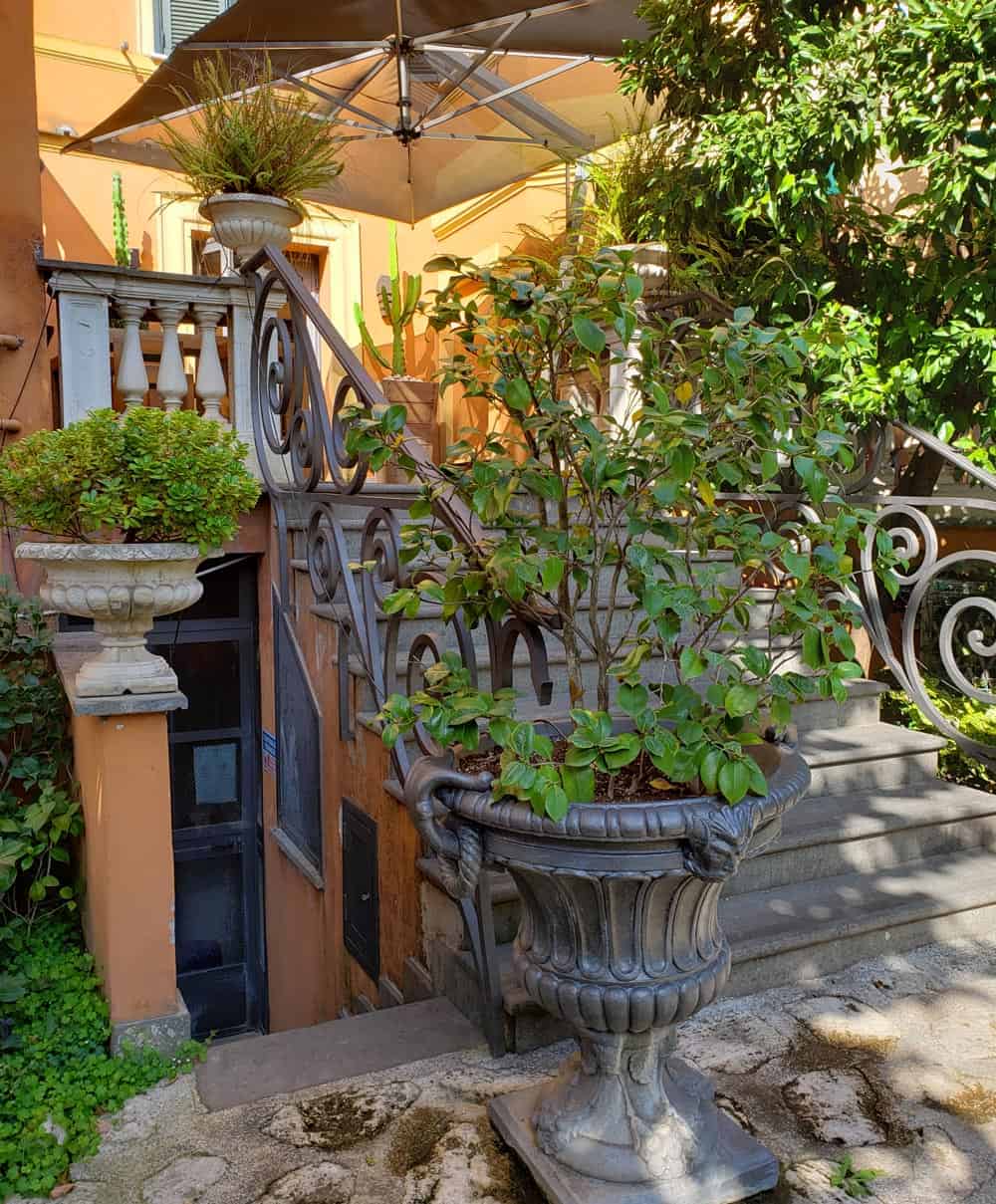
As Italy’s capital and largest city, it demands attention. You have to spend at least 2 days in Rome. More time is better to experience the following highlights:
Trevi Fountain

Take it from us – you’ll want to return to Rome. To ensure that happens, throw a coin into the Trevi Fountain.
Built in the 18th century, this gorgeous fountain is a Baroque masterpiece.
Don’t just toss your coin in. The proper way to do it is with your right hand over your left shoulder.
The coins are gathered, washed and cleaned, then donated to a charity headquartered in Rome, called Caritas. The fountain generates almost $1.7 million Euros a year this way.
Note: The water from Trevi Fountain is recycled and not safe to drink. Also, when you visit, beware of pickpockets. (It’s one of the most common places to get pickpocketed.)
Vatican City

Vatican City, the world’s smallest country, sees up to 40,000 visitors daily. To beat the crowds, visit early and avoid peak times like summer and the holiday season.
The frescoes in the 4th-century church beneath the current Basilica of San Clemente are worth seeing.
Also walk the Ponte Sant’Angelo (Aelian Bridge) across the Tiber River, which leads to Vatican City. The bridge is flanked by 10 angel statues, each holding a symbol of Jesus’s crucifixion,
Go on a Wednesday, and you might catch the Pope making an appearance in St. Peter’s Square.
Vatican Museums
In Vatican City, you’ll want to explore the renowned Vatican Museums. They’re home to over two dozen attractions – one is the renowned Sistine Chapel (covered below).
They also boast more than four miles of art galleries.
Don’t miss Raphael’s Transfiguration (a painting hanging in the Pinacoteca) and the Apollo Belvedere (a magnificent ancient marble sculpture).
There are two amazing archeological areas to explore as well, including the Necropolis of the Via Triumphalis (an ancient Roman burial ground) and the Excavations of St John Lateran.
Sistine Chapel

Who hasn’t heard of Michelangelo Buonarroti or the Sistine Chapel?
Michelangelo painted the ceiling of the Sistine Chapel, which is enormous. This treasure of frescoes (which includes some 343 figures) is about 131 feet long and 43 feet wide.
It took Michelangelo four years to complete, and left him in agony.
Even though special scaffolding was designed for him to paint while standing up, working with his neck craned upwards took a toll on his health.
The best time to visit by yourself is around 1:00 pm. To avoid the worst crowds, don’t go on the last Sunday of the month, when entry is free.
For priority access, have a look at this small-group guided tour. Combining the Vatican Museums with the Sistine Chapel and St. Peter’s Basilica, it’s received thousands of 5-star reviews.
Villa Borghese
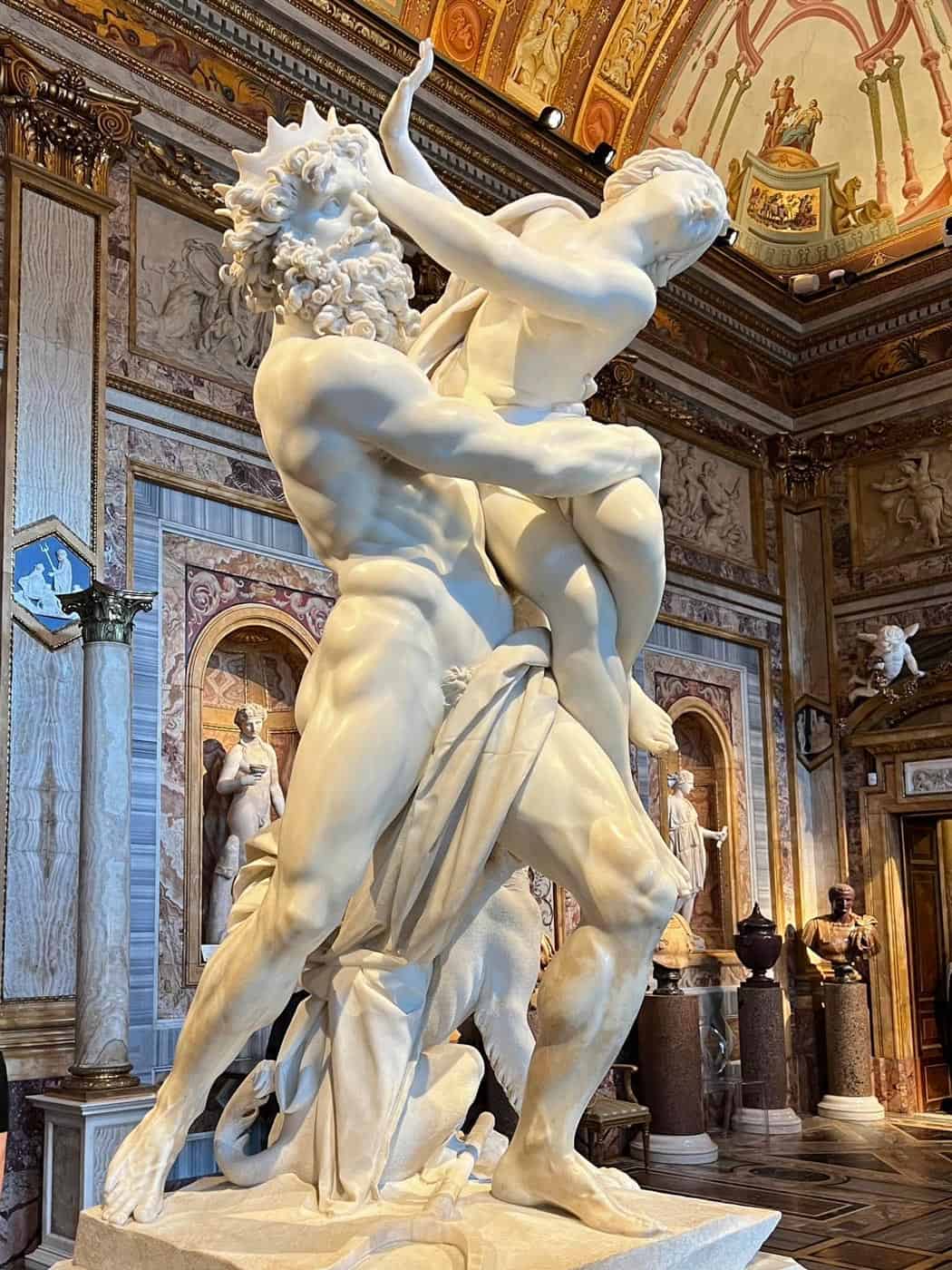
The Borghese Gallery is a total gem in Rome’s art scene, offering an intimate setting to admire historic masterpieces. Tucked inside a grand villa surrounded by lush gardens, it houses a big chunk of the Borghese Collection, started by Cardinal Scipione Borghese, Pope Paul’s nephew, in the 17th century.
Inside, you’ll find stunning works by Raphael, Titian, Caravaggio, Bernini and Canova. A couple of standouts? Bernini’s Rape of Prosperina and his David, sculpted about a century after Michelangelo’s.
On our last trip to Rome, we finally explored the gallery. We joined a fantastic 2-hour small group guided tour (in English) that truly brought the artwork to life!
Spanish Steps

Need some exercise after all the gourmet Italian food you’re sure to devour?
Head to the Spanish Steps! This iconic 138-step stairway connects the Spanish Embassy with Piazza di Spagna. (There’s a lift for those who cannot walk the stairs.)
Accessible anytime, the steps offer lovely views but can get crowded. Visit early (7:00 to 9:00 am) for a quieter experience. Just don’t sit on the Spanish Steps; this is banned, and fines apply!
Roman Forum

Another of the city’s must-see historical sites is the Roman Forum.
Once the heart of political and religious life in the Roman Empire, it hosted public meetings, law courts and religious ceremonies.
After the Empire’s fall, it was buried under debris, and became a livestock pasture, earning the nickname “Cow Field” during the Middle Ages, before being excavated to reveal its grandeur.
Start with the Basilica, the Forum’s largest building, a marvel of Roman architecture that survived an earthquake in 847 AD. Though only three arches remain, it’s still awe-inspiring.
Also admire the Temple of Vesta, where six priestesses guarded The Sacred Fire, and the Temple of Saturn, an iconic landmark with eight towering columns still standing.
3) Bologna

Love food? Then head to the culinary paradise of Bologna in Emilia Romagna in the northern part of the country. For foodies, it’s truly a favorite city to visit in Italy.
A food tour is a great way to get a taste of Bologna.
Perhaps a guided walking food tour of the historic center – sipping wine, tasting authentic Mortadella Bologna and savoring homemade pasta in a classic Bolognese osteria?
Or maybe you’d like a secret food tour, stepping off the beaten path? This one has six stops, including at Bologna’s oldest tavern for a glass of wine and the city’s oldest salumeria.
You can even learn to cook like a local with a hands-on cooking class at a typical Bologna home.
When you’ve had your fill of delectable dishes, explore the city’s historic buildings and sights. Bologna is a medieval maze – rough at the edges yet beautiful in equal parts.

Be sure to visit the University of Bologna. It dates back to 1088 and is the oldest university in Europe. The anatomical theater where dissections once took place is very interesting to see.
Also climb up the 11th century Asinelli Tower (498 steps) for spectacular views of the rolling green hills surrounding the red-roofed city.
4) Turin


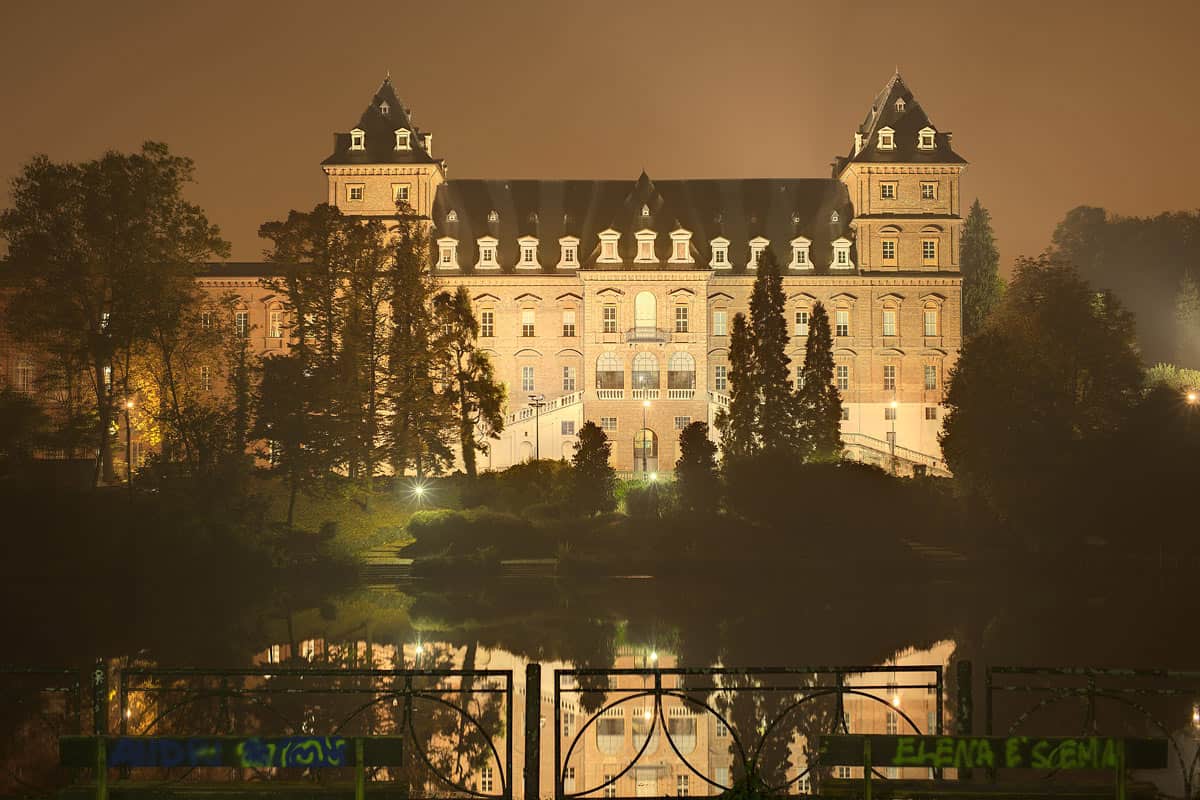
Located in northern Italy, Turin was once the capital of Italy.
It’s often hailed as “the Paris of Italy” because of its royal palaces, grand boulevards and stately piazzas.
Take the 16th century Palazzo Reale (the Royal Palace of Turin). It’s one of the most sumptuous European palaces.
Tour the royal apartments, throne hall, ballroom and library, and you’ll see glorious tapestries, art works and furniture.
A landmark of the city is the Mole Antonelliana, a most distinctive building with its tall basilica. (A mole in Italian is a building of monumental size.)
It was originally designed to be a Jewish Synagogue. The city bought it, and today you can climb the 650+ stairs all the way to the panoramic viewing terrace up top (or you can be whisked up by elevator).
5) Florence

In the heart of the Tuscany region, Florence is the birthplace of the Renaissance. Though Romans might disagree, it’s arguably the top Italian city for art lovers.
With cobbled streets, world-class museums, opulent churches and Renaissance palaces, this beautiful city is brimming with wonders. Stroll along the Arno River at the golden hour, admire Michelangelo’s David, and soak in the romantic charm of apricot-hued architecture.
(Bonus: Florence’s Il Salviatino, a Renaissance villa-turned-luxury-hotel, has some of the most delightful hotel bathrooms in the world!)
Here’s what to see in Florence:
Florence Cathedral

Completed in 1434, the Duomo di Firenze (Cathedral of Florence) stands as a masterpiece of Italian Gothic architecture. Its massive red dome, designed by Filippo Brunelleschi, dominates the city skyline.
Intricate pink, white and green marble patterns adorn its awe-inspiring exterior. Wander inside, and you’ll see amazing frescoes, sculptures and stained-glass windows.
Uffizi Gallery

Built between 1560 and 1581, the Uffizi Gallery boasts one of the most beautiful art collections in the world.
The number of gorgeous artworks is staggering.
Some of the main attractions include The Holy Family (the only surviving free-standing painting by Michelangelo), Annunciation by Leonardo Da Vinci, Rembrandt’s self-portraits and The Birth of Venus by Botticelli.
Not surprisingly, the Uffizi Gallery is extremely popular and usually crowded, with long waits to get in.
To skip the line – and learn the history behind the art – take a tour, like this small-group tour with an expert guide.
Pitti Palace

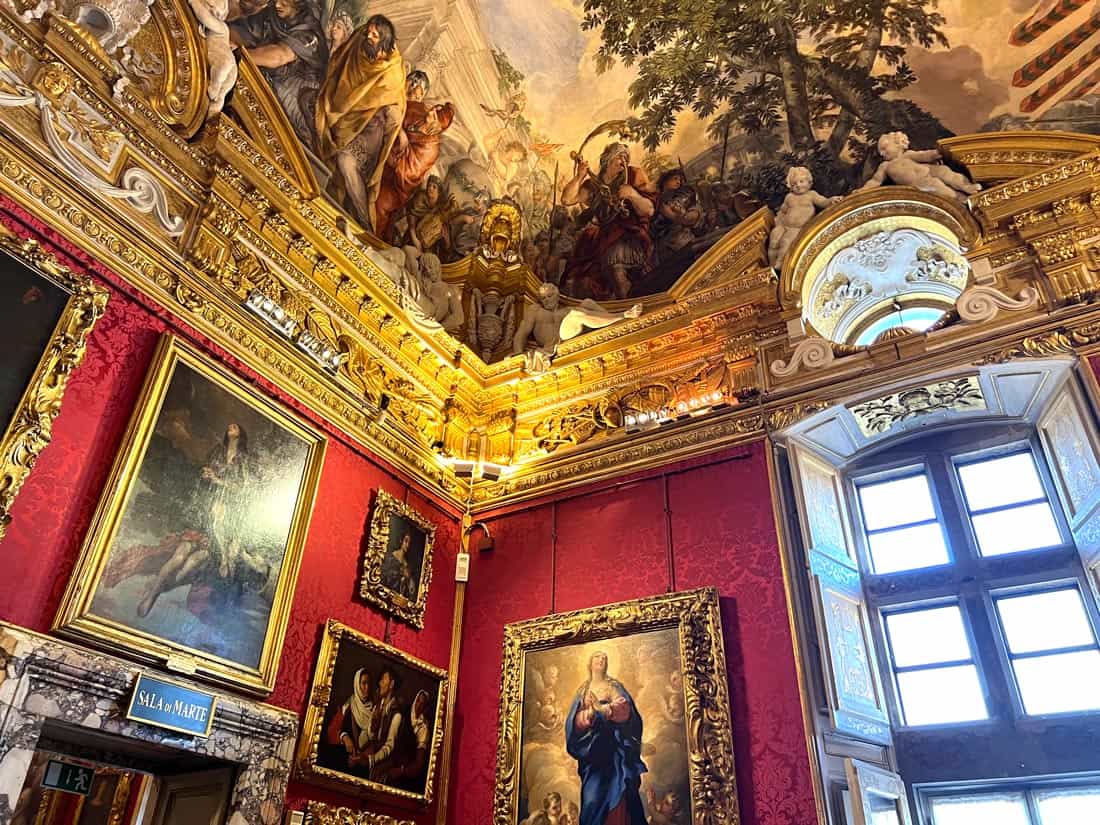
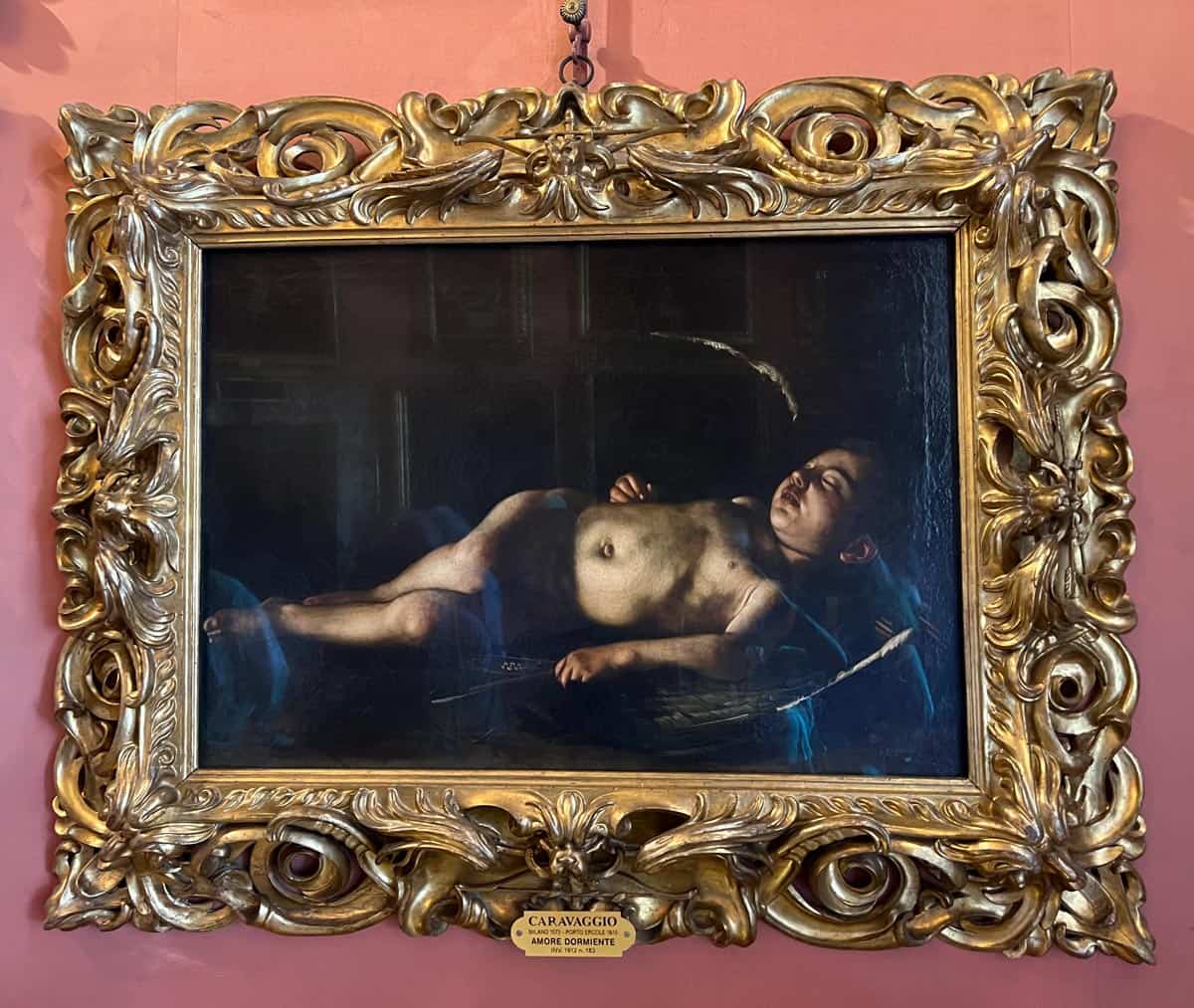
The vast Pitti Palace, built in the mid-1400s for a Florentine banker, later became home to the Medici, Habsburg-Lorraine and Savoy dynasties.
Today, it dazzles visitors with its remarkable collection of paintings by Raphael, Titian, Tintoretto and Rubens, along with magnificent frescoes by Pietro da Cortona.
We were particularly struck by the beauty of the marble sculpture of Napoleon’s sister, Pauline Borghese, by Antonio Canova.
Boboli Gardens
Spreading out over almost 49,000 square feet behind Pitti Palace, the Boboli Gardens are the most important gardens in Italy.
Initially commissioned in 1594 by the Medici family, it took four centuries to complete the structure of the gardens.
Visit the grottos and admire their architecture and the beauty of the paintings and frescoes. Also take a look at the amphitheater – several statues adorn the steps that encircle it.
The Limonaia or “lemon house,” with its collection of rare and exotic citrus plants, is also interesting to see.
Citrus fruits are hard to cultivate in Florence, due to the cool winters. Their rarity makes them an exotic variety – hence the creation of this citrus greenhouse in the mid-1700s.
Ponte Vecchio
One of the city’s most famous landmarks, the Ponte Vecchio (Old Bridge) is a stone-enclosed bridge that was built in 1345.
It’s notable for the shops built along the sides.
They were once occupied by butchers, tanners and farmers. But Duke Ferdinando I de Medici ordered them to leave because of the foul stench wafting from their shops.
Goldsmiths and jewelers moved in – and today some of Florence’s best jewelers sell their gems and jewelry from this medieval bridge.
6) Pisa
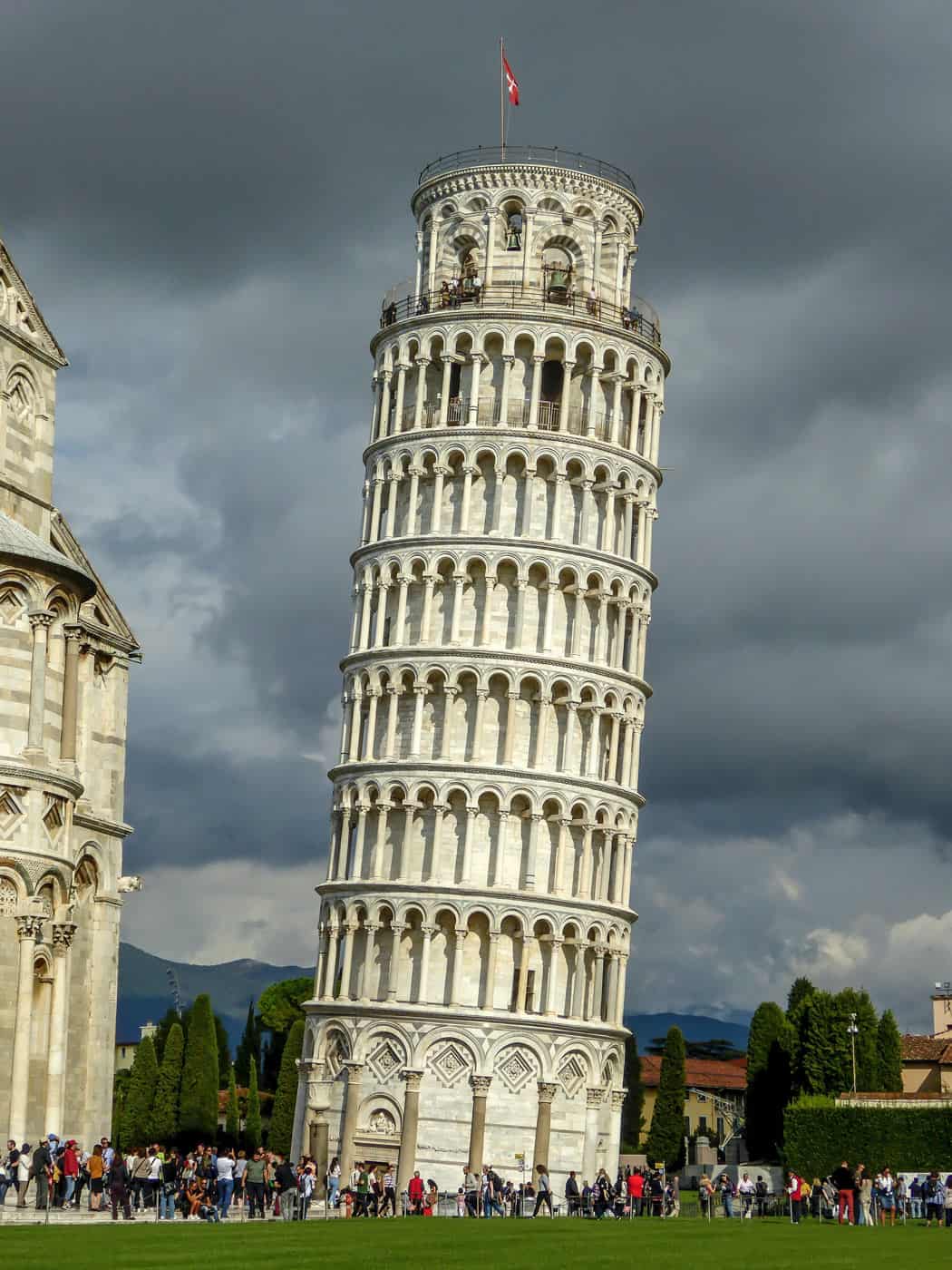
Of course, there’s the Leaning Tower of Pisa. But that’s not all!
Walk along the shores of the Arno River as it flows out into the Tyrrhenian Sea.
The food scene in Pisa is pazzo too. You can sample cheeses, meats, focaccias – and pasta. You might want to book a food tour in Pisa too.
Enjoy getting creeped out? Head to The Museum of Human Anatomy to check out the bones, skulls and mummies.
7) Verona

It doesn’t get as much press as Venice. But nearby Verona wins hearts with its perfect mix of opera, mouthwatering cuisine and undeniable romance.
Shakespeare’s Romeo and Juliet was set in Verona.
Head to Casa di Giulietta (Juliet’s house, supposedly) to see the balcony where Romeo is said to have declared his love for Juliet. (Just expect it to be crowded there.)
Also visit the fabulous Arena di Verona, which dates back to 30 AD. One of the best-preserved Roman amphitheaters, it’s still used today for internationally famous operas.
Another one of the main sights in Verona is the 14th century Castelvecchio or “Old Castle” (now a museum) and the medieval Scaliger Bridge attached to it, spanning the Adige River.

The lovely stone bridge, Ponte Pietra, is also worth walking across.
Last but not least, the Basilica of St. Anastasia has some fine frescoes and paintings inside.
If you’re going to be doing a lot of sightseeing, consider getting the Verona Card, offered by the city. It includes admission to most of Verona’s main sights.
8) Palermo



In southern Italy, Palermo has been a cultural melting pot since ancient times. It’s the capital of Sicily, the largest island in the Mediterranean Sea.
Palermo is grittier than many of the other popular Italian cities covered here, with a rough-and-worn kind of charm. But it has cleaned itself up in recent years, loosened itself from the Mafia’s grip and, in 2019, snagged the honor of Italian Capital of Culture
There’s no denying the beauty of Palermo’s grand palaces, chapels and perfect piazzas.
The Fontana Pretoria (a monumental fountain encircled by marble statues of naked Olympian gods and goddesses) and the 12th century Palermo Cathedral are a treat for architecture buffs.

Even if you’re a complete novice in history and architecture, you’ll adore the richly decorated Capella Palatina (an 1140 chapel completely draped with gold and brightly colored Byzantine mosaics) and La Martorana (the Church of St. Mary, half of which is lined with original gold mosaics).
For more macabre sights, head down to the Capuchin Monastery and Catacombs.
The extensive network of catacombs beneath the Capuchin Monastery contain over 1,000 mummified bodies, some hung in a standing position against the walls.
9) Milan
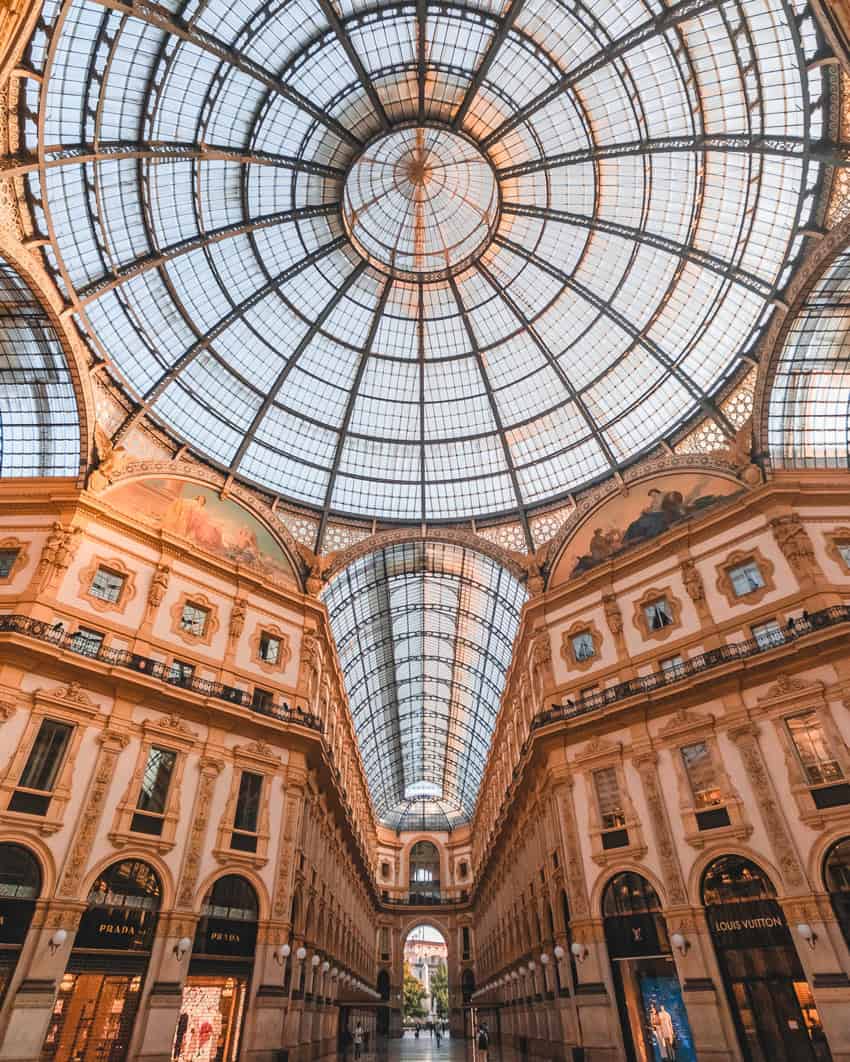
Calling all artists, fashion lovers, shopaholics and architecture buffs! Milan is your dream city!
Located in northern Italy, modern Milan is the wealthiest, most chic Italian city.
Exercise your credit card at the 19th century Galleria Vittorio Emanuele II. You’ll find some of Milan’s most luxurious boutiques here in Italy’s oldest active shopping mall.
Milan also lays claim to some Leonardo da Vinci masterpieces. While the Renaissance genius was born in Florence, he spent 17 years in Milan.
You can see his Last Supper in the former Dominican convent Santa Maria delle Grazie.
Also visit the Museo Nazionale Scienza e Tecnologia Leonardo da Vinci (Italy’s largest science and technology museum) to see reconstructions of machinery designed by the man himself.
Of course, you can’t miss the elaborate Milan Cathedral (Duomo di Milano). The Gothic showstopper is covered with over 4,000 statues and has 135 spires.
Take in an opera too at the elegant Teatro alla Scala, one of the finest opera houses in the world.
10) Naples (and Pompeii)

It’s one of the most underrated cities in Italy. But Naples has its own brash beauty.
The historic city center was declared a UNESCO World Heritage Site in 1995 – and for good reason. It has a plethora of aristocratic residences, catacombs, Baroque churches and convent gardens.
And have we mentioned the pizza? The Neapolitan-style pizza in Naples is famous for its tomatoey thin-crust deliciousness.
Be sure your Naples itinerary includes a fascinating day trip to the ancient city of Pompeii (a 35-minute train ride away).

Pompeii was all but wiped out by Mount Vesuvius and wasn’t rediscovered until 1748. (Mount Vesuvius is still an active volcano, but it’s been “sleeping” since 79 AD.)
Today at the archeological site, you can see the preserved remains of temples, homes, frescoed villas, a brothel, amphitheater and bathhouses, along with plaster-covered victims who couldn’t escape the deadly ash.
11) Ravenna

Home to a whopping eight UNESCO-inscribed monuments? The prestige of once being the capital of the Western Roman Empire and an important Byzantine city? Check and double check.
With a population of about 160,000, it’s much smaller than other major Italian cities like Rome and Naples – making it easy to get around. It’s very flat and walkable, with a pedestrian-friendly city center.
Ravenna’s 5th and 6th century mosaics of religious scenes, along with its 1,500-year-old churches, are the highlight.
You’ll want to go on a guided tour of the mosaic masterpieces (like this tour) and learn all about their meaning and history from an expert.
Must-visit cities in Italy: FAQs
1) What’s the best city in Italy to visit on your first trip to the country?
Rome.
It’s not just Italy’s capital but a sprawling museum of history under the open sky. It’s rich with historic sites like the Colosseum, Vatican City and the Trevi Fountain.
2) After Rome, which Italian city should you see?
Add Venice to your itinerary. Known for its beautiful canals and romantic gondola rides, Venice is like stepping into a living painting. Don’t miss experiencing the grandeur of Piazza San Marco – and feeding the pigeons!
3) Which Italian city offers both cultural richness and stunning scenery?
We love Florence in the heart of Tuscany. Famous for its Renaissance art and surrounded by picturesque vineyards, Florence offers a blend of cultural treasures and beautiful scenery.
And it’s easy to do day trips to places like Siena, Montalcino and Montepulciano in the countryside to soak up the scenic Tuscan landscapes.
Now you know our favorite cities in Italy to visit!
Each one offers a distinct flavor of Italian life.
Whether you’re gazing up at the grandeur of Rome’s Colosseum, savoring a perfect plate of pasta in Bologna or marveling at Florence’s David, each city packs an unforgettable punch.
Of course, we repeat: Unless you have a year or so to spare, don’t go to all 11 cities on one trip.
Remember the coin you tossed in Rome’s Trevi Fountain? It’ll bring you back to Italy!
See our other Italy travel guides
- How to Plan a Trip to Italy
- 23 Most Beautiful Places in Italy (Not Big Cities)
- 17 Most Romantic Things to Do in Venice
- 10 Most Romantic Hotels in Venice
- Getting From the Venice Cruise Port to the Train Station
- The Beautiful Bridges of Venice
- How to Visit Matera Effortlessly (Private Transfers and Tours)
- The Leaning Tower of Pisa is Worth Visiting!
Love this guide on the best cities to visit in Italy? Then pin it!
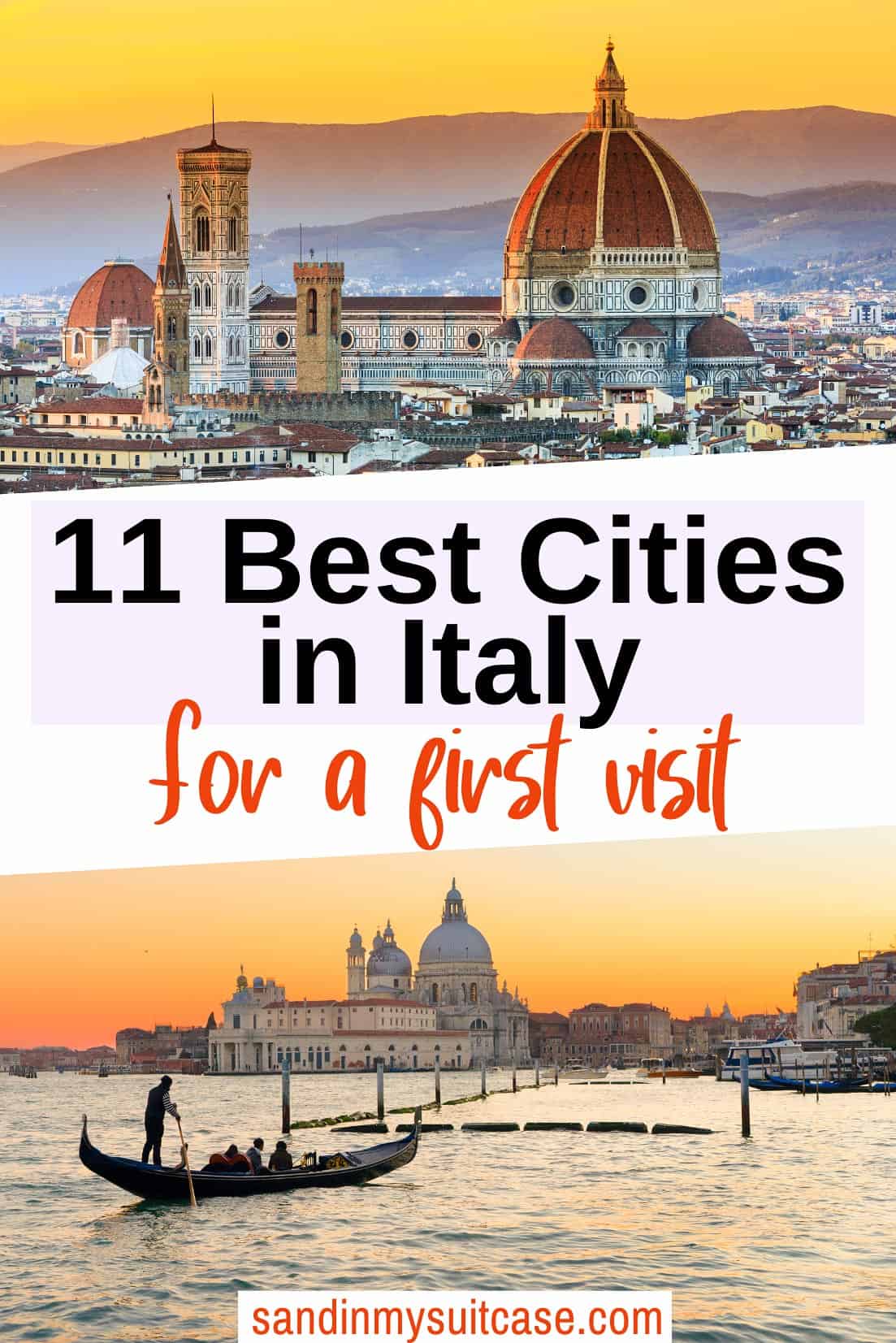
Our top travel tips and resources
General trip planning: TripAdvisor is a helpful starting point, offering loads of user reviews on hotels, restaurants and things to do.
Hotels: Booking.com is our go-to for scoring a “wow” hotel – or at least a decent one – often at lower rates than the hotel’s own website. We especially like Booking’s flexible cancellation policy! (You may prefer Expedia for booking hotels in the U.S. or Mexico.)
Vacation homes, condos and rentals: We prefer and use Vrbo (Vacation Rentals by Owner).
Flights: For the cheapest flights, search on Google Flights or Expedia. (Just be aware Expedia tickets are often non-refundable. If you want more flexibility, it’s usually worth booking directly with the airline, even if it costs a bit more.)
Airport lounge access: We love (and have) Priority Pass for comfy lounge seats, free snacks and drinks, complimentary WiFi and sometimes even showers and spa services!
Tours: For the best local food, walking and other guided tours, plus skip-the-line tickets to attractions, check out Viator (a TripAdvisor company) and GetYourGuide.
Car rental: Renting a car is often a great way to explore off the beaten path. Discover Cars searches car rental companies so you get the lowest rates.
eSIMS: Stay connected affordably with Airalo eSIMS covering 200+ countries and trusted by 10 million+ users, including us! (No more huge roaming bills!)
Travel insurance: SafetyWing is designed for frequent travelers, long-term adventurers and digital nomads. It covers medical expenses, lost checked luggage, trip interruption and more. We also have and recommend Medjet for global air medical transportation.
Travel gear: See our travel shop to find the best luggage, accessories and other travel gear. (We suggest these comfy travel sandals for city walking, the beach and kicking about.)
Need more help planning your trip? Check out our travel tips and resources guide for airline booking tips, ways to save money, how to find great hotels and other crazy useful trip planning info.
If you make a booking or purchase through our site, we may earn a small commission (at no cost to you). Thanks!
About the authors

